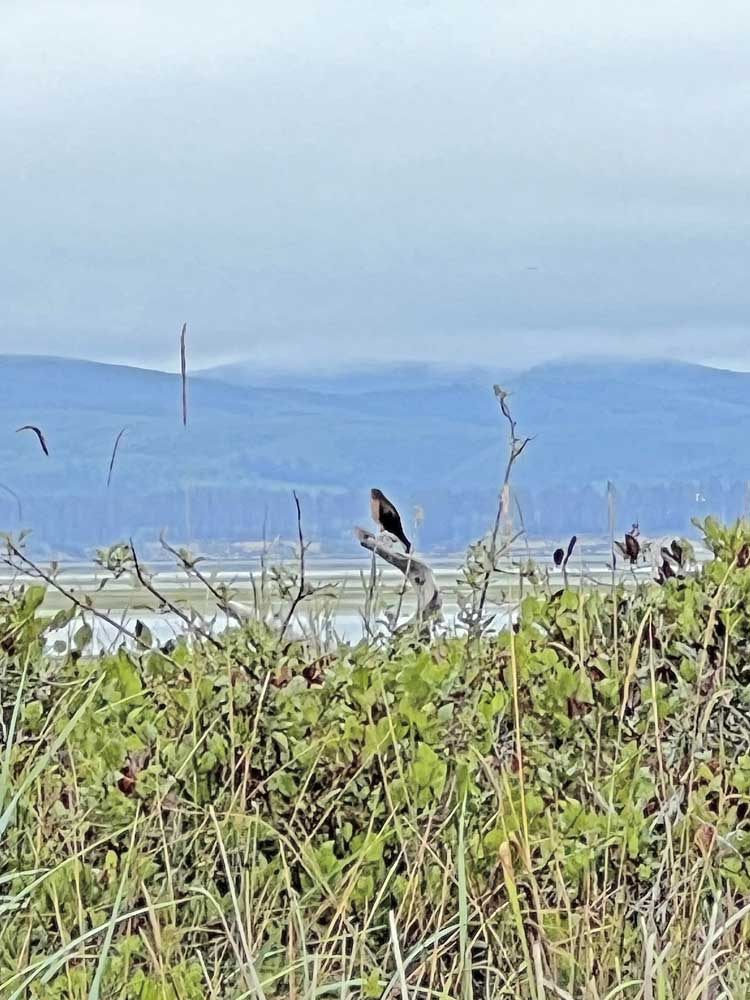Birding: Fall migration: They’re on the move
Published 2:55 pm Wednesday, August 16, 2023

- Northern harriers are always on the move while hunting for small mammals. They hunt from perches too along Willapa Bay.
It is time for the amazing annual fall bird migration. Shorebird migration began around the end of July. It should peak in the latter part of August and will continue well into September and early October.
Trending
Other bird species are also on the move. The very large numbers of hummingbirds that have been eating us out of house and home throughout July and the first week of August have dwindled to just a pair of Anna’s and a pair of rufous hummingbirds. They get along well with each other most of the time, but they have their moments when they can’t tolerate one another on the same feeder.
The gray catbird moved on this week and the olive-sided flycatcher seems to have left this morning. Swainson’s thrush is nowhere to be seen these days either.
Heermann’s gulls are on the move too. I have seen a few on the beach in the last week or so. After breeding in Mexico, they move on up the coast. They stay on our ocean beaches until well into the fall. The sooty shearwaters don’t seem to have made their move to the ocean waters off our beaches or Willapa Bay in large numbers yet. Soon there will be thousands parading and swirling in sync over the ocean waves for squid, anchovies, and other small fish. The shearwaters we see here on the coast “breed mainly on islands in the southwestern part of the Pacific Ocean.” After raising their single chick, they migrate northward to spend their winter in the northern hemisphere. (National Audubon Society, 2021). Their yearly journey amounts to about 40,000 miles in a single year. Overall, this species, namely, the Atlantic and Pacific coastal ocean’s flocks is currently classified as “near threatened.” (Audubon 2021) posits that this is due to human activity. The problem being that shearwaters are often caught in fishing nets. In addition, they experience a lack of food due to over-fishing and in places like New Zealand they are hunted.
Trending
The brown pelicans will be on the move too. They come on up the coast after breeding with the hope of finding food. As I have mentioned in my earlier writings, I haven’t seen many this year along our beaches compared to other years. They will soon leave for the warmer southern climates. I am still seeing osprey in the nest. Soon it will time for them to depart as well.
The western tanager, black-headed grosbeak, and Swainson’s thrush will soon be on the move. They won’t come back until next spring when they come to raise another brood.
The hermit thrush will soon move into our area along with the golden-crowned sparrow, Townsend’s warbler, the fox sparrow, and the peregrine falcon.
Some species are permanent residents. They will stay. Some may move short distances but in essence they will remain on the peninsula. Glaucous-winged gulls. California gulls, and western gulls can be seen all year round. Anna’s hummingbird over winters as do woodpeckers, including the red-breasted sapsucker, downy woodpecker, hairy woodpecker, northern flicker, and the pileated woodpecker.
November will be the beginning of the winter raptor survey sponsored by Audubon. Susan Stauffer and I will be on the lookout for the raptors that stay with us during the winter. Peregrine falcons, northern harriers and owls are high on our list. It would be great if we could add a snowy owl this winter. I read with dismay, the article in last week’s Chinook Observer concerning WDFW’s recommendation to remove barred owls from the state in an effort to save the spotted owl. While they may not be ”native” in the West, they are a native North American owl species. Other species have adapted to similar situations why not leave the barred owl alone and let the spotted owl learn to adapt. Human interference with their habitat goes along way back and basically the loss of it seems to be the culprit.
As you can see birds are on the move. Some are coming and some are going. It will be interesting to watch the timing of migration this year. Will the changing weather patterns, and warmer temperatures influence the birds’ migration pattern? We will wait and see.
Happy birding.









